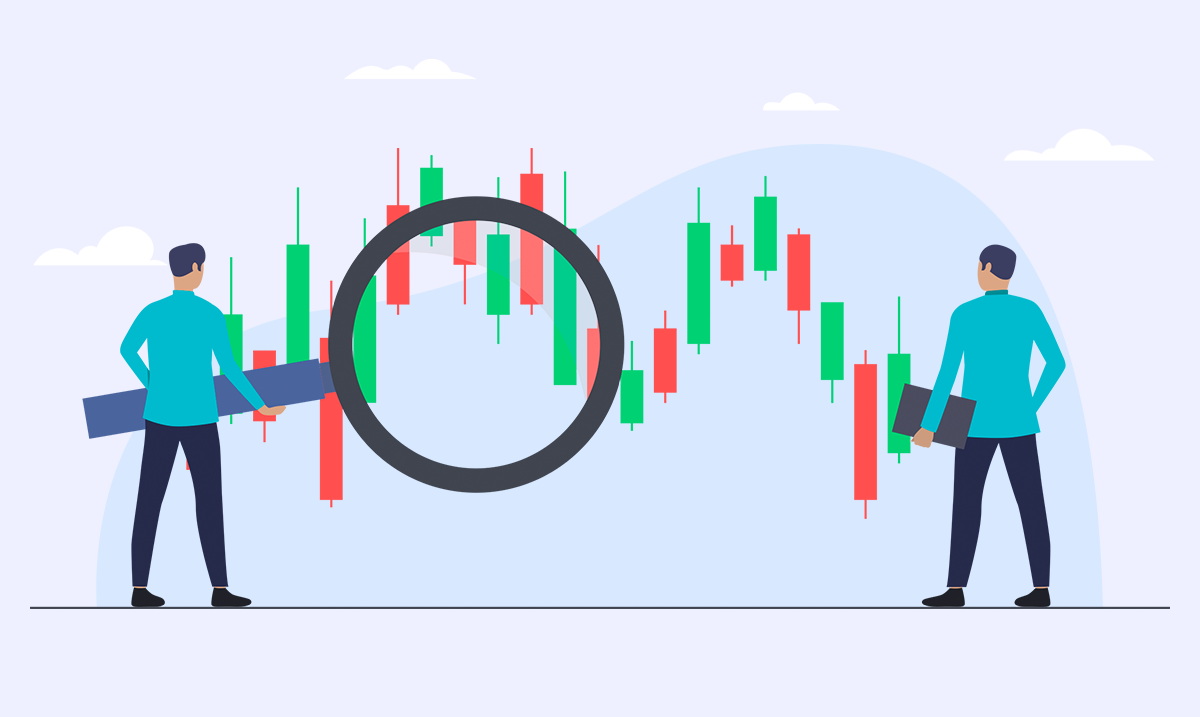What is the Risk-Reward Ratio: A Comprehensive Guide


Naturally, your answer would be less than $100. This concept, known as the Risk/Reward Ratio, is a critical factor for traders in financial markets. It helps them assess the potential reward against the amount they are willing to risk in each trade.
For successful trading, understanding and effectively using the Risk/Reward Ratio is essential when developing a trading strategy.
In this article, we will explore what the Risk/Reward Ratio is, why it matters, and how traders can use it to increase their chances of success in the markets.
Contents
What is the Risk-Reward Ratio?
The Risk-Reward Ratio in trading is the ratio of the potential profit in a trade to the potential loss. For example, if you risk $50 in a trade and your potential profit is $150, the Risk-Reward Ratio for this trade is 1:3.
In the forex market, it is recommended that the minimum Risk-Reward Ratio for trades be 1:2. This means that if you are risking $50, your minimum potential profit should be $100.
This ratio helps traders evaluate the potential return of a trade relative to its risk, enabling them to make more informed decisions. It's a fundamental concept for managing risk and maximizing returns in financial markets.
For instance, as shown in the image below from the Trendo trading platform, if we open a gold buy trade at 2688.17, set the profit target at 2700.63, and the stop-loss at 2684.02, we can calculate the risk-to-reward ratio by dividing the potential profit by the potential loss. In this case, the ratio is 1:3.
Read more: $100 Free Welcome Bonus from Trendo Broker: A Unique Opportunity to Profit in Forex
How to Calculate Risk-Reward Ratio?
The Risk-Reward Ratio demonstrates that achieving success in financial markets doesn't require every trade to be profitable. Even with a certain number of profitable trades, you can achieve a positive overall result for your trading account.
For example, if all your trades have a Risk-Reward Ratio of 1:2, only 40% of your trades need to be profitable for your account to be in the positive.
Let's say you made 100 trades with a Risk-Reward Ratio of 1:2, and only 40% of those trades were profitable, while the other 60 trades resulted in losses. In this scenario, if you risked 0.5% of your total capital on each trade, your trading account would still be up by 10%. This example clearly shows the importance of calculating the Risk-Reward Ratio.
Essentially, the Risk-Reward Ratio is the main advantage of your trades, and ignoring this concept will likely lead to negative results in the long term.
Read more: What is the connection between Win Rate and Risk to Reward?
Calculating the Risk-Reward Ratio involves dividing the potential profit of a trade by the potential loss. This simple calculation helps you make more informed trading decisions and manage your risks effectively, paving the way for sustained success in trading.
Why is the Risk-Reward Ratio Important?
The Risk-Reward Ratio shows that you don't need every trade to be profitable to succeed in financial markets. Even with a certain number of profitable trades, you can achieve a positive overall result for your trading account. For instance, if all your trades have a Risk-Reward Ratio of 1:2, only 40% of your trades need to be profitable for your account to be in the positive.
Imagine you made 100 trades with a Risk-Reward Ratio of 1:2. Even if only 40 of those trades were profitable and the remaining 60 resulted in losses, your account would still be up by 10% if you risked 0.5% of your total capital on each trade.
This example clearly demonstrates the importance of the Risk-Reward Ratio. Essentially, this ratio is the main advantage of your trades. Ignoring it will likely lead to negative results in the long term.
Success in financial markets starts with balancing your Win Rate and the Risk-Reward Ratio. The next step is executing your trading strategy precisely. If you can control your emotions and follow all risk management guidelines exactly, you will undoubtedly become a successful trader and achieve financial freedom.
Additionally, understanding the Risk-Reward Ratio helps you set realistic goals and manage expectations. It provides a framework for making informed decisions and helps avoid impulsive trading based on short-term market fluctuations.
By consistently applying a favorable Risk-Reward Ratio, you enhance your ability to grow your trading account steadily and sustainably.
How to Determine a Suitable Risk-Reward Ratio?
Determining a suitable Risk-Reward Ratio is essential for effective trading. Here are steps to help you find the right balance:
1. Understand Your Goals: Define your financial goals and risk tolerance. Are you looking for steady, long-term gains, or quick profits? Your goals will influence the ratio you choose.
2. Analyze Market Conditions: Different market conditions may require different Risk-Reward Ratios. For example, in a volatile market, you might need a higher ratio to compensate for the increased risk.
3. Set Profit Targets and Stop-Losses: Determine your profit targets and stop-loss levels before entering a trade. Set your stop-loss at a level where you are comfortable with the potential loss and your profit target at a multiple of this amount.
4. Use Historical Data: Review past trades to see which Risk-Reward Ratios have worked well for you. This historical perspective can provide valuable insights into what might be suitable for your trading style.
5. Adjust Based on Experience: As you gain more trading experience, you may find that certain ratios work better for you than others. Be open to adjusting your Risk-Reward Ratio as you refine your strategy.
6. Consider the Asset Class: Different assets may require different ratios. For example, stocks might have different risk profiles compared to forex or commodities, so adjust your ratio accordingly.
7. Risk Management Tools: Utilize risk management tools such as trailing stops and position sizing to help maintain your desired Risk-Reward Ratio. These tools can help you manage your trades more effectively and limit potential losses.
By carefully considering these factors, you can determine a Risk-Reward Ratio that aligns with your trading goals and helps you manage your risk more effectively. This careful planning is key to achieving long-term success in the financial markets.
Common Mistakes in Using the Risk-Reward Ratio
Using the Risk-Reward Ratio effectively is crucial for successful trading. However, traders often make mistakes that can undermine its benefits. Here are some common pitfalls to avoid:
1. Ignoring Market Conditions: Some traders apply a fixed Risk-Reward Ratio without considering current market conditions. Markets can be volatile or stable, and adjusting your ratio accordingly is essential for managing risk effectively.
2. Setting Unrealistic Ratios: Aiming for extremely high rewards with very low risks might seem appealing, but it often leads to frustration and missed opportunities. Ensure your ratios are realistic and achievable based on your trading strategy and market analysis.
3. Overlooking Stop-Loss Placement: Properly placing stop-loss orders is vital. Setting them too close can result in premature exits, while placing them too far can lead to significant losses. Find a balance that aligns with your trading plan.
4. Neglecting to Adjust: As market conditions change, so should your Risk-Reward Ratio. Failing to adjust your ratio in response to evolving trends can negatively impact your trading performance.
5. Overtrading: Attempting to find trades that fit a perfect Risk-Reward Ratio can lead to overtrading. Instead, focus on quality over quantity, selecting trades that genuinely meet your criteria.
6. Ignoring Personal Risk Tolerance: Each trader has a different risk tolerance. Applying a one-size-fits-all approach can lead to stress and poor decision-making. Tailor your Risk-Reward Ratio to match your personal risk appetite.
7. Lack of Backtesting: Failing to test your Risk-Reward Ratio on historical data can be detrimental. Backtesting helps verify that your chosen ratio works well with your strategy before applying it in live trading.
By being aware of these common mistakes and taking steps to avoid them, you can use the Risk-Reward Ratio more effectively in your trading. This proactive approach will help you manage risks better and increase your chances of long-term success in the financial markets.
Tips for Optimizing the Risk-Reward Ratio
Optimizing the Risk-Reward Ratio is essential for enhancing your trading performance. Here are some practical tips to help you get the most out of this important metric:
1. Set Clear Objectives: Define your trading goals and risk tolerance. Knowing what you aim to achieve will help you choose a suitable Risk-Reward Ratio.
2. Conduct Thorough Research: Stay informed about market trends and news. Comprehensive research can help you make better trading decisions and set realistic Risk-Reward Ratios.
3. Use Technical Analysis: Utilize tools like trend lines, moving averages, and support/resistance levels to identify optimal entry and exit points. This can improve your Risk-Reward Ratio by increasing the accuracy of your trades.
4. Adjust for Volatility: Adapt your Risk-Reward Ratio based on market volatility. In more volatile markets, consider using a higher ratio to account for increased risks.
5. Keep Emotions in Check: Stick to your trading plan and avoid making impulsive decisions based on emotions. Emotional trading can lead to poor Risk-Reward management.
6. Implement Stop-Loss Orders: Always use stop-loss orders to limit potential losses. Proper placement of stop-loss levels is crucial for maintaining a favorable Risk-Reward Ratio.
7. Review and Adjust Regularly: Continuously review your trading performance and adjust your Risk-Reward Ratio as needed. Regular assessment helps you refine your strategy and improve results.
8. Learn from Experience: Analyze your past trades to understand what worked and what didn’t. Use this knowledge to optimize your Risk-Reward Ratio for future trades.
By applying these tips, you can better manage your risks and enhance your overall trading strategy. A well-optimized Risk-Reward Ratio can lead to more consistent and profitable trading outcomes.
What is the Risk to Reward Indicator?
In previous sections, we discussed the Risk-Reward Ratio and its importance. You learned that the Risk-Reward Ratio formula is the potential profit in a trade relative to the potential loss.
Now, let's introduce the Risk to Reward Indicator, a tool that helps you easily apply this concept in the Trendo trading platforms. This indicator is designed to enhance your trading experience and success.
To use the Risk to Reward Indicator on the Trendo platform, click on the "Drawing" option. Depending on your trade type (buy or sell), select either "Long Position" or "Short Position."
Next, set the tool based on your trade's entry and exit points. For instance, in the image below, after setting the entry and exit points of the trade, the Risk to Reward tool displays the number 2 in the blue box.
Using this tool can improve your trading efficiency and help you achieve more consistent results. By incorporating the Risk to Reward Indicator into your trading routine, you can better manage risks and increase your chances of success in the financial markets.
Conclusion
In this article, we explored the Risk-Reward Ratio in trading and discussed its formula. This concept is a crucial parameter for managing risk in financial markets. Ignoring it will inevitably lead to failure in trading. If you want to trade confidently in the forex market, focus on strategies with a minimum Risk-Reward Ratio of 1:2 or higher.
By understanding and applying the Risk-Reward Ratio, traders can make more informed decisions, manage their risks effectively, and increase their chances of long-term success. It serves as a foundational element in any robust trading strategy, ensuring that the potential rewards justify the risks taken.
Always aim to incorporate this concept into your trading plan for better, more consistent results.
FAQ
1. What is the Risk-Reward Ratio?
2. Why is the Risk-Reward Ratio important?
3. What is an ideal Risk-Reward Ratio?
Article similaire
Le plus visité
0






















